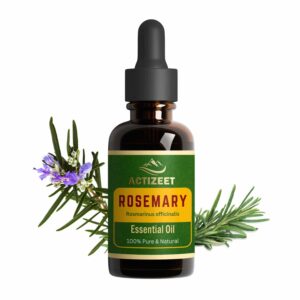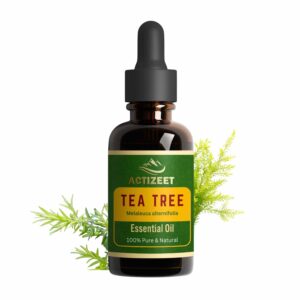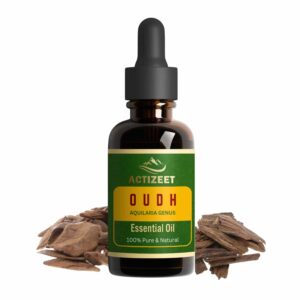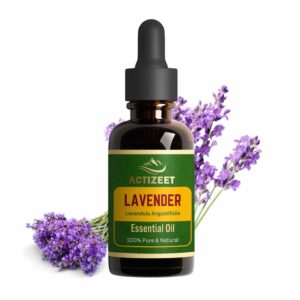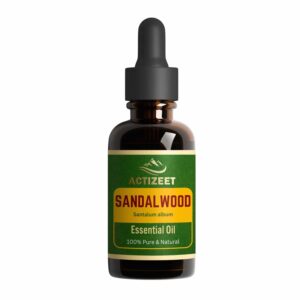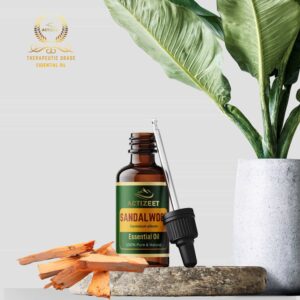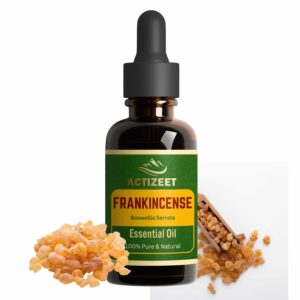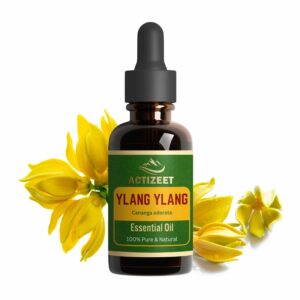Joint pain, also known as arthralgia, refers to discomfort or soreness in the joints of the body. It can occur in various parts of the body such as the knees, hips, shoulders, and wrists. Joint pain can range from mild to severe and can hinder one’s ability to perform daily activities with ease.
There are numerous causes for joint pain. One common cause is arthritis, a condition characterized by inflammation and stiffness in the joints.
Osteoarthritis is the most prevalent form of arthritis and typically affects older individuals due to wear and tear on the joints over time. Rheumatoid arthritis, on the other hand, is an autoimmune disease where the body’s immune system mistakenly attacks its joint tissues.
In addition to arthritis, other factors such as injuries, overuse of joints during physical activities or repetitive motions, obesity, and certain medical conditions like gout or lupus can contribute to joint pain. Understanding the underlying cause is crucial to determining appropriate treatment options.
Table of Contents
ToggleEssential oils and their therapeutic properties
Essential oils have gained popularity in recent years for their potential therapeutic effects on various health conditions, including joint pain relief. These oils are derived from plants through processes such as steam distillation or cold pressing.
Each essential oil contains concentrated plant compounds that provide unique fragrances and potentially beneficial properties. When it comes to joint pain relief specifically, essential oils offer a natural alternative approach that may help reduce inflammation, soothe discomfort, improve circulation around affected areas, and promote relaxation of muscles surrounding the joints.
It’s important to note that while essential oils have shown promise as complementary remedies for joint pain management in some individuals, they should not replace medical advice or prescribed treatments. Consulting with a healthcare professional before incorporating essential oils into your joint pain relief routine is advisable, particularly if you have any pre-existing medical conditions or are currently taking medications.
Understanding Joint Pain Relief with Essential Oils
How essential oils work on joint pain
When it comes to joint pain relief, essential oils have gained recognition for their effectiveness. But how exactly do these aromatic extracts work their magic? Well, it all comes down to their unique chemical makeup and therapeutic properties.
Essential oils contain compounds known as terpenes, which possess anti-inflammatory, analgesic, and soothing qualities. These compounds penetrate the skin and enter the bloodstream, targeting inflammation in the joints.
One key mechanism of action is through the inhibition of specific enzymes that trigger inflammation. For instance, lavender oil contains linalool and linalyl acetate, which have been found to suppress inflammatory enzymes like COX-2.
By reducing inflammation in the joints, essential oils help relieve pain associated with conditions such as arthritis or joint injuries. Additionally, many oils have warming or cooling effects that provide immediate comfort by soothing tense muscles and promoting circulation in affected areas.
Benefits of using essential oils for joint pain relief
Using essential oils for joint pain relief offers a multitude of benefits beyond just easing discomfort. Unlike conventional over-the-counter medications or prescription drugs that often come with unwanted side effects, essential oils provide a natural alternative without harsh chemicals.
This makes them suitable for individuals who prefer a holistic approach or those who may be sensitive to certain pharmaceutical ingredients. Furthermore, essential oils offer a versatile treatment option that can be customized based on individual preferences and needs.
You can choose from a wide range of oils depending on your specific symptoms or personal preferences regarding scent and application methods. Whether you prefer topical application through massage or bathing in infused water, inhaling via diffusers or steam inhalation techniques – there are numerous ways to incorporate these aromatic wonders into your daily routine for joint pain relief.
Another significant advantage is the potential long-term benefits offered by essential oil usage. Some essential oils, like eucalyptus or ginger, not only provide immediate relief but also possess regenerative properties that support tissue repair and joint health.
By using essential oils regularly, you can potentially enhance joint mobility and prevent further deterioration. Understanding how essential oils work on joint pain and recognizing the benefits they offer can empower individuals seeking natural remedies for alleviating discomfort caused by joint-related issues.
These therapeutic extracts provide a convenient and customizable solution that not only targets inflammation but also promotes overall well-being. So why not explore the world of essential oils and embrace their potential to ease your joints’ burden?
Top Essential Oils for Joint Pain Relief
Lavender Oil: Soothing properties and muscle relaxation
When it comes to easing joint pain, lavender oil is a fantastic choice due to its soothing properties and ability to induce muscle relaxation. Lavender oil contains compounds like linalool and linalyl acetate, which have been found to possess anti-inflammatory effects. These compounds work by inhibiting the production of inflammatory molecules, thus reducing inflammation in joints.
To benefit from lavender oil’s joint pain-relieving properties, there are various techniques you can try. One popular method is to create a warm compress by adding a few drops of lavender oil to a bowl of warm water.
Soak a cloth in this mixture and gently apply it to the affected joint for 10–15 minutes. The warmth, combined with the soothing aroma of lavender, will help relax your muscles and alleviate pain.
Peppermint Oil: Cooling effect and analgesic properties
Peppermint oil is not just known for its refreshing scent; it also offers remarkable relief from joint pain due to its cooling effect and analgesic (pain-relieving) properties. The active compound in peppermint oil, menthol, works as a natural numbing agent, providing temporary relief from the discomfort associated with joint pain. To experience the benefits of peppermint oil for joint pain relief, you can use it topically or through aromatherapy.
For topical application, dilute a few drops of peppermint oil with a carrier oil like coconut or jojoba oil before massaging it onto the affected area in gentle circular motions. Alternatively, you can add a few drops of peppermint essential oil to an aromatherapy diffuser or inhale directly from the bottle for quick relief.
Eucalyptus Oil: Anti-inflammatory and analgesic effects
Eucalyptus oil has long been valued for its potent anti-inflammatory and analgesic effects, making it an excellent choice for alleviating joint pain. The primary active compound in eucalyptus oil, called eucalyptol or cineole, possesses anti-inflammatory properties that help reduce swelling and inflammation in the joints. To incorporate eucalyptus oil into your joint pain relief regimen, you can create a soothing massage blend by diluting a few drops of eucalyptus oil with a carrier oil.
Gently massage this mixture onto the affected area to promote circulation and provide relief. Another method is to add a few drops of eucalyptus essential oil to a warm bath and soak in it for 15-20 minutes.
The steam from the bath will help deliver the therapeutic benefits of eucalyptus directly to your joints. Remember, when using essential oils for joint pain relief, it’s essential to use high-quality oils and follow proper dilution guidelines to avoid skin irritation or adverse reactions.
Lesser-Known Essential Oils for Joint Pain Relief
Copaiba oil: Powerful anti-inflammatory properties
When it comes to relieving joint pain, copaiba oil is a hidden gem. This essential oil derives from the resin of the Copaifera tree, found in the Amazon rainforest.
Copaiba oil contains high levels of beta-caryophyllene, a potent natural compound known for its anti-inflammatory properties. This compound interacts with the body’s CB2 receptors, which helps reduce inflammation in the joints.
The unique compounds in copaiba that target joint inflammation
What sets copaiba oil apart is its rich concentration of beta-caryophyllene, which accounts for around 50% of its chemical makeup. This compound has shown promising results in reducing pain and swelling associated with joint inflammation. Additionally, copaiba oil also contains other beneficial compounds like alpha-humulene and alpha-copaene that further contribute to its anti-inflammatory effects.
Methods of application and potential side effects
To benefit from copaiba oil’s therapeutic properties, it can be applied topically or used aromatically. For topical application, dilute a few drops of copaiba oil with a carrier oil like coconut or jojoba oil and gently massage it onto affected joints. Alternatively, you can inhale copaiba oil by using an essential oil diffuser or by simply adding a few drops to a tissue and inhaling deeply.
While generally safe to use, some individuals may experience skin irritation or allergic reactions when using copaiba oil topically. It’s always recommended to perform a patch test before applying it to larger areas of the body and consult with a healthcare professional if you have any concerns or existing medical conditions.
Ginger oil: Warming effect and improved circulation
If you’re seeking warmth and improved circulation to alleviate joint pain, ginger oil may be just what you need. Ginger oil, derived from the root of the ginger plant, has been used for centuries to relieve various types of pain, including joint discomfort. Its warming effect helps increase blood flow to the affected area, promoting healing and reducing pain.
How ginger oil enhances blood flow to alleviate joint pain
The active compounds in ginger oil, such as gingerol and zingiber, are responsible for its analgesic properties. When applied topically, ginger oil penetrates deep into the skin and dilates blood vessels, resulting in increased circulation around the joints. This improved blood flow helps deliver vital nutrients and oxygen to the damaged tissues while flushing away inflammatory substances that contribute to joint pain.
Creative ways to use ginger oil topically or aromatically
To target joint pain with ginger oil, you can create a warming topical blend by diluting a few drops of ginger oil in a carrier oil like sweet almond or olive oil. Massage this mixture onto the affected joints for soothing relief.
Alternatively, you can incorporate ginger oil into your daily routine by adding a few drops to warm bathwater for an indulgent soak that soothes your joints. Another delightful way is through inhalation; simply add a few drops of ginger oil to a diffuser or inhale directly from the bottle for an uplifting experience that promotes relaxation.
Frankincense Oil: Regenerative properties for damaged joints
Frankincense essential oil has long been revered for its healing properties and is particularly beneficial when it comes to promoting tissue repair in damaged joints. Derived from Boswellia trees commonly found in regions like India and Oman, frankincense possesses regenerative qualities that make it valuable in managing joint discomfort.
The role of frankincense in promoting tissue repair
Frankincense oil contains potent compounds like boswellic acids, which have been shown to possess anti-inflammatory and analgesic properties. These compounds not only help reduce inflammation in the joints but also support cellular regeneration, aiding in the repair of damaged tissues.
When applied topically, frankincense oil enhances blood circulation around the joints, allowing for an increased supply of oxygen and nutrients. This improved circulation stimulates tissue repair processes and helps alleviate joint pain over time.
Conclusion
In the realm of essential oils for joint pain relief, copaiba oil, ginger oil, and frankincense oil stand out as commendable choices. Their unique properties help combat inflammation, improve circulation, and promote tissue repair in a natural way.
Incorporating these lesser-known essential oils into your joint pain management routine can offer soothing relief alongside traditional approaches. Embrace the power of nature’s remedies and discover a renewed sense of comfort and mobility on your journey to wellness.
RECOMANDED PRODUCTS
-
Rated 4.72 out of 5
₹1,500.00Original price was: ₹1,500.00.₹1,200.00Current price is: ₹1,200.00. Incl. GST ADD TO CART Buy Now -
Rated 4.88 out of 5
₹1,500.00Original price was: ₹1,500.00.₹1,200.00Current price is: ₹1,200.00. Incl. GST ADD TO CART Buy Now -
Rated 4.63 out of 5
₹1,900.00Original price was: ₹1,900.00.₹1,450.00Current price is: ₹1,450.00. Incl. GST ADD TO CART Buy Now -
Rated 4.74 out of 5
₹1,500.00Original price was: ₹1,500.00.₹1,200.00Current price is: ₹1,200.00. Incl. GST ADD TO CART Buy Now -
Rated 4.72 out of 5
₹2,500.00Original price was: ₹2,500.00.₹1,950.00Current price is: ₹1,950.00. Incl. GST ADD TO CART Buy Now -
Rated 4.88 out of 5
₹1,500.00Original price was: ₹1,500.00.₹1,200.00Current price is: ₹1,200.00. Incl. GST ADD TO CART Buy Now -
Rated 4.80 out of 5
₹1,500.00Original price was: ₹1,500.00.₹1,200.00Current price is: ₹1,200.00. Incl. GST ADD TO CART Buy Now -
Rated 4.88 out of 5
₹1,500.00Original price was: ₹1,500.00.₹1,200.00Current price is: ₹1,200.00. Incl. GST ADD TO CART Buy Now
Related posts:
- Discover Top Essential Oils for Back Pain Relief
- Cure Arthritis and Joint Pains Naturally
- Relieve Itching: Best Essential Oil for Skin – Expert Guide
- Cajeput Essential Oil: A Natural Remedy for Respiratory, Skin and Mental Health Issues
- Lavender Essential Oil: A Natural Remedy for Mind, Body, and Home
- The Miraculous Benefits of Camphor Essential Oil: A Comprehensive Guide to Relieving Pain, Boosting Mental Health and Enhancing Skin Care
- Freshen Your Breath Naturally: Essential Oils for Bad Breath
- Unlock the Power of Ginger: A Comprehensive Guide to the Benefits of Ginger Essential Oil


